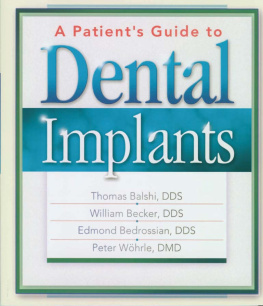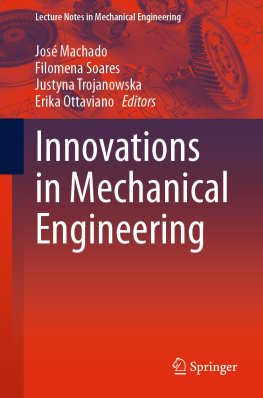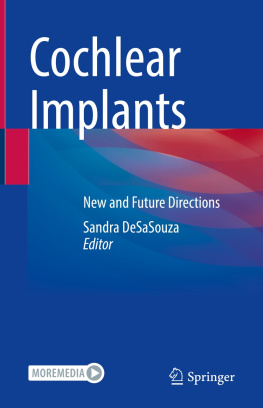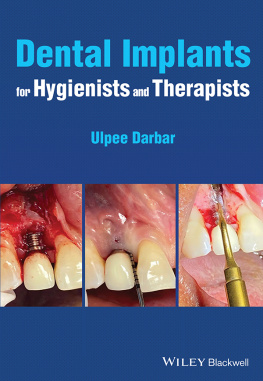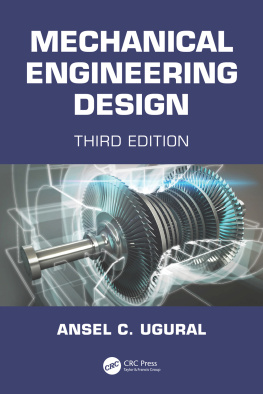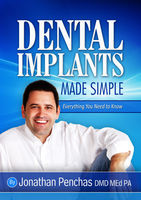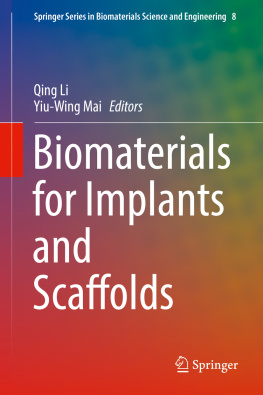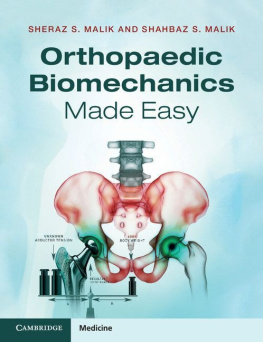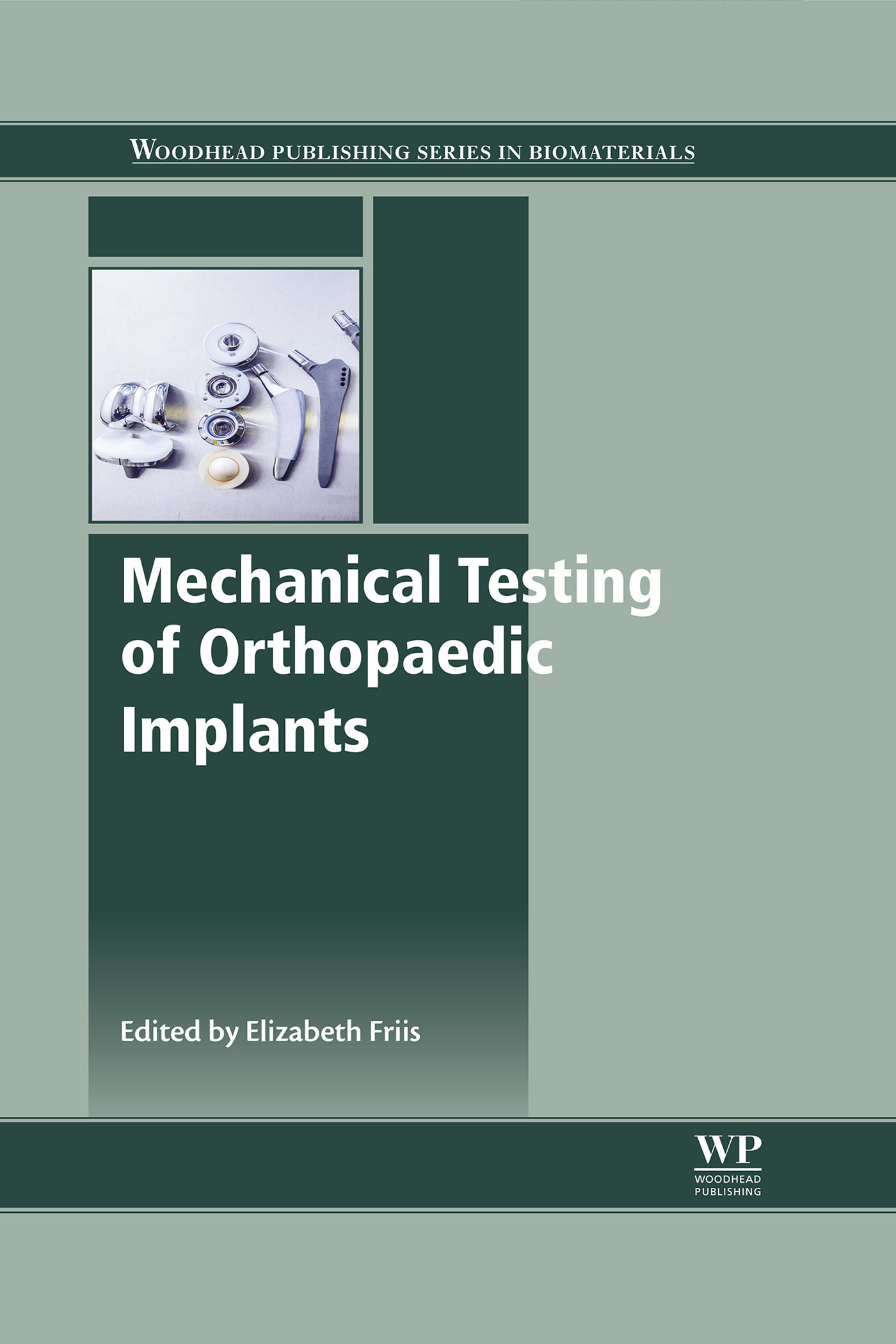Mechanical Testing of Orthopaedic Implants
First edition
Elizabeth Friis

Copyright
Woodhead Publishing is an imprint of Elsevier
The Officers Mess Business Centre, Royston Road, Duxford, CB22 4QH, United Kingdom
50 Hampshire Street, 5th Floor, Cambridge, MA 02139, United States
The Boulevard, Langford Lane, Kidlington, OX5 1GB, United Kingdom
2017 Elsevier Ltd. All rights reserved.
No part of this publication may be reproduced or transmitted in any form or by any means, electronic or mechanical, including photocopying, recording, or any information storage and retrieval system, without permission in writing from the publisher. Details on how to seek permission, further information about the Publisher's permissions policies and our arrangements with organizations such as the Copyright Clearance Center and the Copyright Licensing Agency, can be found at our website: www.elsevier.com/permissions.
This book and the individual contributions contained in it are protected under copyright by the Publisher (other than as may be noted herein).
Notices
Knowledge and best practice in this field are constantly changing. As new research and experience broaden our understanding, changes in research methods, professional practices, or medical treatment may become necessary.
Practitioners and researchers must always rely on their own experience and knowledge in evaluating and using any information, methods, compounds, or experiments described herein. In using such information or methods they should be mindful of their own safety and the safety of others, including parties for whom they have a professional responsibility.
To the fullest extent of the law, neither the Publisher nor the authors, contributors, or editors, assume any liability for any injury and/or damage to persons or property as a matter of products liability, negligence or otherwise, or from any use or operation of any methods, products, instructions, or ideas contained in the material herein.
Library of Congress Cataloging-in-Publication Data
A catalog record for this book is available from the Library of Congress
British Library Cataloguing-in-Publication Data
A catalogue record for this book is available from the British Library
ISBN: 978-0-08-100286-5 (print)
ISBN: 978-0-08-100284-1 (online)
For information on all Woodhead publications visit our website at https://www.elsevier.com/books-and-journals

Publisher: Matthew Deans
Acquisition Editor: Laura Overend
Editorial Project Manager: Charlotte Cockle
Production Project Manager: Omer Mukthar
Cover Designer: Maria Ines Cruz
Typeset by SPi Global, India
List of contributors
D. Abel FDA Center for Devices & Radiological Health, Silver Spring, MD, United States
D.E. Anderson Harvard Medical School, Boston, MA, United States
P.M. Arnold University of Kansas School of Medicine, Kansas City, KS, United States
D.J. Bokor Macquarie University, Sydney, NSW, Australia
C. Clary University of Denver, Denver, CO, United States
J.J. Crisco Warren Alpert Medical School and Brown University, Providence, RI, United States
D. Dabirrahmani Macquarie University, Sydney, NSW, Australia
T.A. DeCoster University of New Mexico, Albuquerque, NM, United States
E.A. Friis University of Kansas, Lawrence, KS, United States
V.K. Goel University of Toledo, Toledo, OH, United States
L.C. Jones The Johns Hopkins University School of Medicine, Baltimore, MD, United States
T.J. Joyce School of Mechanical & Systems Engineering, Newcastle University, United Kingdom
J.S. Kawalec Kent State University College of Podiatric Medicine, Independence, OH, United States
L. Maletsky University of Kansas, Lawrence, KS, United States
E.M. Mannen University of Arkansas for Medical Sciences, Little Rock, AR, United States
S.L. Smith School of Mechanical & Systems Engineering, Newcastle University, United Kingdom
J.C. Thomas Oread Medical, Lenexa, KS, United States
L.D. Timmie Topoleski University of Maryland, Baltimore, MD, United States
A.K. Tsao Mid-Atlantic Permanente Medical Group, Largo, MD, United States
S.W. Wolfe The Hand and Upper Extremity Center, Hospital for Special Surgery, Weill Medical College of Cornell University, New York, NY, United States
T. Woods FDA Center for Devices & Radiological Health, Silver Spring, MD, United States
Foreword
The musculoskeletal system consists principally of bone, muscle, tendon, ligament, and articular cartilage tissue. These are arranged throughout the body to provide internal support and allow motion to occur. Their specific configuration, however, varies with the anatomic site by virtue of the types of loads these tissues experience and the movements that they are required to perform. As such, while the musculoskeletal system is governed by a set of underlying principles, there is a great deal of local variance throughout. This is why treatments for musculoskeletal injury and disease are divided into regions such as craniomaxillofacial, oral, shoulder and elbow, hand and wrist, hip and knee, foot and ankle, spine, and others.
We have an aging population and one of the consequences of aging is the deterioration of the musculoskeletal system resulting in pain and loss of function. One of the most common age-related musculoskeletal diseases is osteoarthritis in which the articular cartilage of joints, especially of the hip and knee, becomes structurally compromised. This often results in the need for total joint replacement if more conservative measures fail. Other musculoskeletal conditions include congenital deformities, bone tumors, and trauma. These conditions may require mechanical means to augment and stabilize the musculoskeletal system, such as plates, screws, pins, nails, cages, soft tissue anchoring devices, and others. Recently, tissue engineering has emerged as a discipline that takes a biological approach to the repair and restoration of the musculoskeletal system.
It is important that orthopedic implants be designed to have mechanical properties suitable for their anticipated clinical requirements. This requires a thorough understanding of material properties and biomechanics. It also requires mechanical testing of the implants to ensure that they meet their performance specifications. Such testing can take many forms. For instance, components of total joint replacement devices may be tested under cyclic-loading conditions to establish fatigue performance and in joint motion simulators to measure surface wear. Plates and screws can undergo bend and shear testing to determine their inherent mechanical properties. Screw pullout strength can be tested in cadaver bone or a synthetic bone substrate to determine the holding power of the screw. The ability of these types of devices to restore and stabilize anatomy, however, often requires cadaver testing whereby the anatomical site is compromised to simulate the clinical condition and then repaired with the implants with the construct biomechanically tested. Consequently, there are many factors that must be considered when designing and conducting mechanical tests on orthopedic implants, including (1) the clinical use, (2) the nature of the device, (3) the substrate used, (4) static versus dynamic testing, (5) load magnitude and application rate, (6) fixturing requirements, (7) environmental conditions, (8) the types of data to be collected, and (9) ideally a way to compare the mechanical test results with the loading patterns and displacements likely to occur clinically. Nevertheless, despite the best efforts made to mechanically test orthopedic implants, the ultimate test is actual clinical use. The clinical use of medical devices in general, and orthopedic implants in particular, are governed by the various country-specific or region-specific regulatory bodies and their requirements should also be considered with respect to the types of mechanical tests performed.



